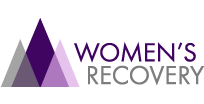Sometimes, a person struggling with addiction to painkillers and heroin may hide their addictive behaviors from their loved ones. Hiding heroin addiction from family can be complicated—but when someone has a home and a job and shows up when needed their loved ones can ignore the signs of a heroin user that might be appearing in the background.
However, when someone’s addiction develops and worsens, heroin user symptoms become difficult to hide—and relationships start to suffer. Addiction is a disease that thrives on lies in every form—deception, dishonesty, deflection, and denial. If this situation sounds familiar and you’re tired of deceiving people close to you, call 833.754.0554 to speak with someone from Women’s Recovery about our women’s heroin addiction treatment program in Colorado.
How Does a Heroin Addiction Develop?
Because doctors in the United States commonly prescribe opioid painkillers, the country is experiencing an opioid epidemic—and a rise in cases of heroin addiction. In many cases of prescription painkillers, individuals become so used to medications like Vicodin that they find it difficult to stop taking them. People may need opioids to get through the day, not just to manage their chronic pain. They start ignoring their prescription instructions and take more pain pills at a time or more frequently than they did before.
This is the start of opioid tolerance and dependence, which leads to opioid addiction. When their prescriptions run out, they may try to go to other doctors to get more opioids—but some turn to street drugs like heroin, which can be expensive but also easily accessible.
Heroin is a powerful and illegal opioid drug that typically comes in powder form but it can also be a dark sticky substance known as black tar. It’s sold in very small doses (sometimes called “hits”). Heroin is very addictive and it can quickly lead to physical dependence.
Regular heroin use leads to tolerance, meaning users need higher doses of the drug over time in order to achieve the same effects they felt initially. As a result, people often find that they need more and more heroin just to avoid feeling unwell or “dope sick.” This can lead to an increase in the frequency of use and eventually, addiction.
Signs of Heroin Addiction
If you’ve been hiding a heroin addiction from loved ones, it’s time to face the truth. To determine if you’re struggling with this type of addiction, watch out for signs such as:
- Constantly seeking more drugs than prescribed from multiple doctors
- Unusual behavior and mood swings
- Money problems or unusual requests for money
- Sudden changes in social circles or activities
- Slurred speech and lack of coordination
- Severe nausea, vomiting, and sweating
- Depression, irritability, confusion, paranoia
- Unusual sleeping patterns
If any of these signs of a heroin user look familiar to you, then you should seek professional help before your addictive behaviors affect your family and work life.
How People Struggling with Opioid Addiction Hide Their Destructive Habit
Doctor Shopping
Some people have been known to go from doctor to doctor, making stories and even faking symptoms to get opioid prescriptions. This is known as “doctor shopping,” and it’s a way for people to keep their addiction hidden.
Turning to Black-Market Pain Pills and Heroin
Some people even go so far as to turn to black-market pain pills to hide their addiction. People may take them out of desperation—but these drugs can have serious consequences. When all else fails, people may turn to heroin as an alternative to opioid painkillers. This is a dangerous decision and will likely lead to addiction in no time at all.
Moving Money
Another sign of addiction is when someone tries to hide money from family members or move it around for suspicious reasons. People struggling with addiction may try to take large sums of cash from their accounts and make transfers between accounts to have enough money for drugs.
Lying About Times and Places
People struggling with addiction may also start lying about where they are and what they are doing. They may say that they are at work when, in reality, they are looking for drugs or using them.
Covering Up Track Marks
People who use heroin may also try to hide the track marks left by needles. They may wear long-sleeved shirts to cover them up, even when it’s hot outside. This behavior often indicates that someone is trying to conceal their addiction from those around them.
What Happens When You Hide Your Heroin Addiction?
Hiding heroin addiction can have severe consequences for the addict and their family. Addiction affects not only the person struggling with it but also their relationships, jobs, and finances.
For example, hiding heroin addiction from family can make them unprepared if you overdose at home or if they walk in on you sticking a needle in your arm. It can also strain relationships and cause the family to mistrust each other. Additionally, addiction can lead to financial problems—which may require a family member to step in and help.
Find Heroin Addiction Treatment in Colorado at Women’s Recovery
Contact Women’s Recovery today at 833.754.0554 or use this online form to learn more about our women’s heroin addiction treatment program in Colorado. Our experienced and compassionate staff is here to help you every step of the way.







